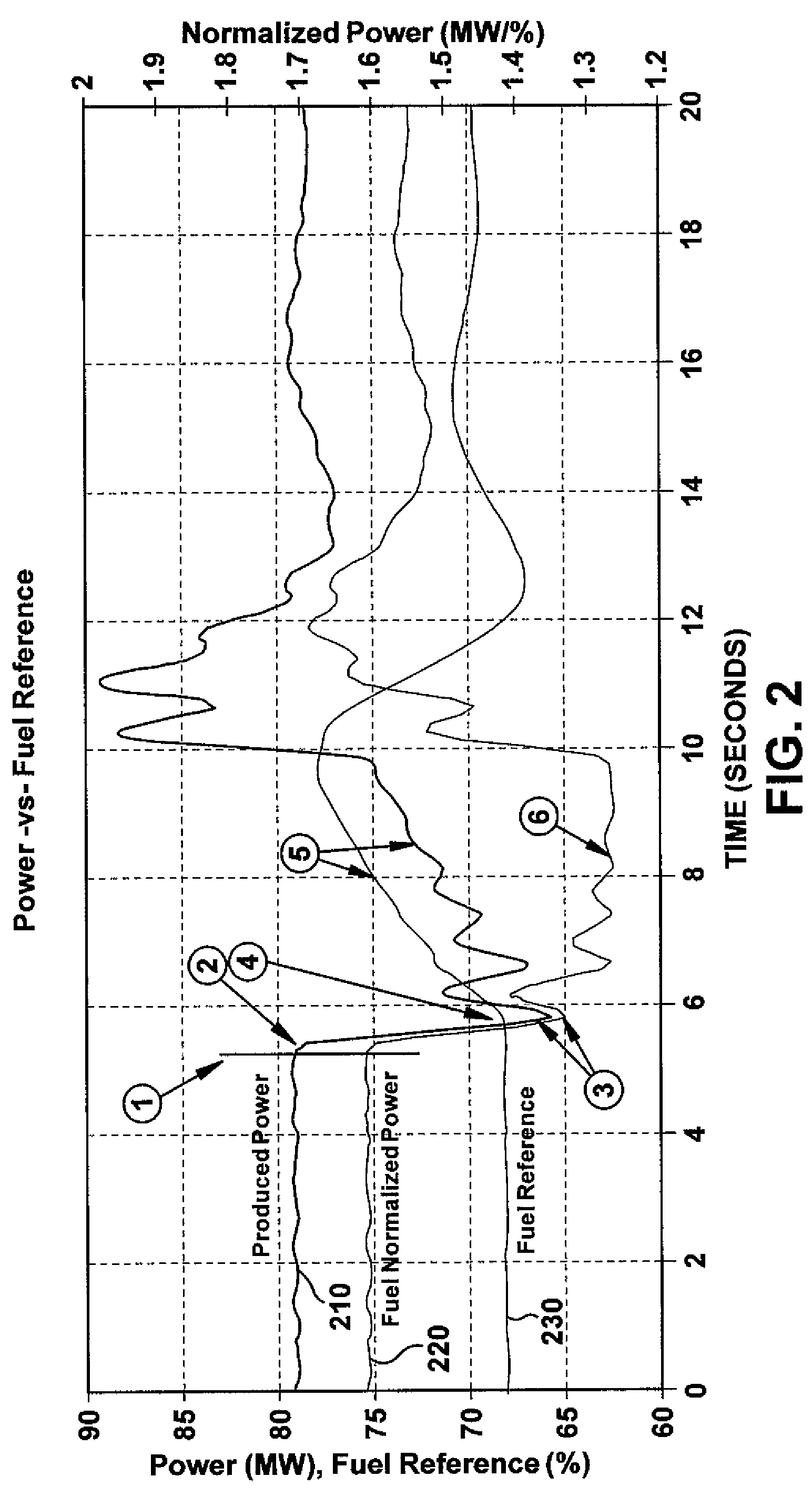Method and system for detection of gas turbine combustion blowouts utilizing fuel normalized power response
a gas turbine and power response technology, applied in the field of gas turbine control, can solve the problems of hardware damage, affecting the combustion dynamics of the combustor, and the margins are much tighter
- Summary
- Abstract
- Description
- Claims
- Application Information
AI Technical Summary
Benefits of technology
Problems solved by technology
Method used
Image
Examples
Embodiment Construction
[0026]The following embodiments of the present invention have many advantages, including identifying combustion dynamics and flameout by identifying designated transient conditions and allowing continued operation at targeted NOx levels.
[0027]An effective approach to quickly and reliably identifying a blowout during operation in the premix mode is by the effect on produced turbine power. To this end, Fuel Normalized Power (FNP) is a very useful signal, in that a power reduction caused by a blowout may be distinguished from much slower changes in power driven by global fuel demand (changing load request). FNP also has a much faster response than alternative signals, such as temperature. Monitoring changes in FNP can permit detecting, with confidence, the lean blowout.
[0028]The first step in detection of blowout in at least one combustor is to differentiate it from transients that result in changes in power from controlled fuel. Fuel Normalized Power (FNP) is power normalized to the c...
PUM
 Login to View More
Login to View More Abstract
Description
Claims
Application Information
 Login to View More
Login to View More - R&D
- Intellectual Property
- Life Sciences
- Materials
- Tech Scout
- Unparalleled Data Quality
- Higher Quality Content
- 60% Fewer Hallucinations
Browse by: Latest US Patents, China's latest patents, Technical Efficacy Thesaurus, Application Domain, Technology Topic, Popular Technical Reports.
© 2025 PatSnap. All rights reserved.Legal|Privacy policy|Modern Slavery Act Transparency Statement|Sitemap|About US| Contact US: help@patsnap.com



